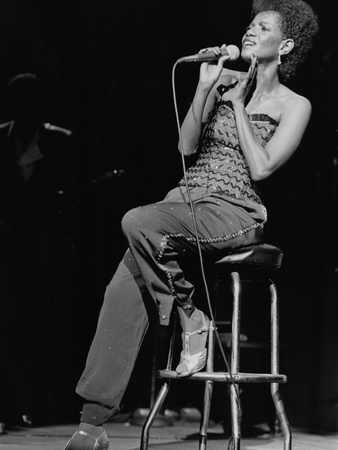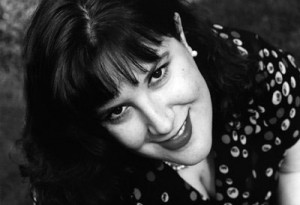 METROPOLIS (1927); Dir. Fritz Lang; Starring Brigitte Helm, Gustav Fröhlich and Alfred Abel; Starts Friday, May 24 @ Plaza Theatre (visit website for ticket prices and showtimes); Tuesday, May 28 @ Woodruff Arts Center (free outdoor screening w/ live accompaniment); Trailer here.
METROPOLIS (1927); Dir. Fritz Lang; Starring Brigitte Helm, Gustav Fröhlich and Alfred Abel; Starts Friday, May 24 @ Plaza Theatre (visit website for ticket prices and showtimes); Tuesday, May 28 @ Woodruff Arts Center (free outdoor screening w/ live accompaniment); Trailer here.
By Aleck Bennett
Contributing Writer
It’s a Fritz Lang kind of Spring, I suppose. That feeling is helped along by two venues showing the most recent restoration of Lang’s pioneering science fiction classic, METROPOLIS, which finally brings the film as close to its original state as possible. The historic Plaza Theatre has booked the film for a full week, and there’s a special outdoor screening of the restoration at Woodruff Arts Center featuring the US debut of a specially-composed score performed live by Georgia Tech’s Sonic Generator.
Last time we talked Fritz Lang, it was about M (1931), the first serial killer-themed horror film. But now, we’re going four years earlier and looking at METROPOLIS, the first feature-length science fiction movie. And in the ensuing years, METROPOLIS continues to be relevant to contemporary life, its themes resonating through the ages as our industrialized society becomes more and more technocratic.
The sprawling plot of METROPOLIS speaks mostly to the topic of class division. In the year 2026, the wealthy preside over the city of Metropolis and lead lives of decadence, while a teeming underclass of workers toil day in and day out, slaves to the machines that provide the power that drives the city above. Freder (Gustav Fröhlich)—the son of Joh Fredersen (Alfred Abel), the city’s aristocratic Master—falls in love with a labor organizer named Maria (Brigitte Helm) and enters the underground city of the workers. There, he just may serve to fulfill the prophesied role of the city’s “heart”: the man who will help Maria unite the workers and join the city’s “hands” (its workers) with its “head” (the ruling aristocracy). But the ruling class has other plans to keep the underclass down: to kidnap Maria and use a robotic doppelganger to sow seeds of discord among the laborers.
 Add in a love triangle, espionage, sabotage, disaster, riots, beautiful art deco set design, Biblical references, hints of occultism, expert use of miniatures and pioneering special effects, and not only do you have an epic that presents a morality play and political polemic depicting class struggle with the rhythm of everyday life, but also a bustling action picture designed to keep viewers enthralled with the kind of futuristic grand spectacle not seen on the screen before.
Add in a love triangle, espionage, sabotage, disaster, riots, beautiful art deco set design, Biblical references, hints of occultism, expert use of miniatures and pioneering special effects, and not only do you have an epic that presents a morality play and political polemic depicting class struggle with the rhythm of everyday life, but also a bustling action picture designed to keep viewers enthralled with the kind of futuristic grand spectacle not seen on the screen before.
Unfortunately, that balance was largely destroyed by cuts to the film that took place shortly after its premiere. The film was funded and its distribution controlled by a partnership between MGM, Paramount and German film studio UFA, which was known as Parufamet (a portmanteau of the three studios’ names). Parufamet cut the film from its 153-minute running time to 115 minutes, and later that year it was cut down further by UFA to a brief 91 minute running time. Huge chunks of character exposition and plot points were lost completely. This left much of the spectacle but presented seemingly one-dimensional characters inhabiting the film, which only emphasized the heavy-handedness of the film’s message-laden storyline. A film about people and ideas became simply a film about ideas.
Over the decades, numerous attempts at restoration took place using whatever could be found. The high (or low, depending on your stance) point of 20th-century efforts came with the 1984 release of a version compiled by songwriter/producer Giorgio Moroder. Moroder’s restoration was, at that point, the most complete version of the film available, incorporating all footage known to exist at the time. However, the film was tinted throughout, with its intertitles replaced with subtitles for continuity’s sake, with a pop soundtrack (featuring Freddie Mercury, Pat Benatar, Bonnie Tyler, Adam Ant, Loverboy, etc.) in place of a traditional score and with its frame rate increased to 24 frames per second (which resulted in an artificially-shortened running time of 82 minutes).
 In 2002, Kino Lorber and the F.W. Murnau Foundation released a 124-minute restoration that seemed to be the final word on the film, as all remaining footage was believed to have been lost to the ravages of time. Missing footage was described in newly-designed title cards to fill in the blanks. But shortly afterward, film prints were found in New Zealand and Argentina that contained scenes not included in any existing copy. In fact, the Argentine print was a 16mm reduction of the entire original cut of the film. With these new sources in hand, METROPOLIS was restored to 95% completion (only two short sequences could not be included due to extensive damage). Settling on an acceptable frame rate (the actual frame rates of many silent films are hard to determine), and with the additional sequences restored to their rightful places, the final running time of the now-nearly-complete METROPOLIS is 145 minutes.
In 2002, Kino Lorber and the F.W. Murnau Foundation released a 124-minute restoration that seemed to be the final word on the film, as all remaining footage was believed to have been lost to the ravages of time. Missing footage was described in newly-designed title cards to fill in the blanks. But shortly afterward, film prints were found in New Zealand and Argentina that contained scenes not included in any existing copy. In fact, the Argentine print was a 16mm reduction of the entire original cut of the film. With these new sources in hand, METROPOLIS was restored to 95% completion (only two short sequences could not be included due to extensive damage). Settling on an acceptable frame rate (the actual frame rates of many silent films are hard to determine), and with the additional sequences restored to their rightful places, the final running time of the now-nearly-complete METROPOLIS is 145 minutes.
And those restored scenes restore a coherency and depth to the film that has not been experienced since its premiere some 86 years ago. The character of Freder becomes heroic rather than a cipher. Maria becomes a fully-rounded character rather than an archetype. Sure, the highly stylized acting familiar to German Expressionist silent filmmaking is still present, which may stand as a roadblock to viewers raised on the naturalistic acting of modern cinema, but the operatic tenor of the performances is almost necessary to keep the actors from being overwhelmed by the sheer size and spectacle of the film’s sets and effects (adjusted for inflation, the film’s budget in today’s numbers would be $200 million, making it one of the most expensive movies ever made, equal to James Cameron’s TITANIC). Without the benefit of speech, the sheer BIGNESS of the movie demands performances as visually loud as the sets are huge.
Though the film was panned upon first wide release (in my opinion, largely due to its being butchered and available only in compromised form), METROPOLIS has since become one of the highest-regarded films in existence, with its influence felt in movies ranging from BLADE RUNNER to DR. STRANGELOVE; from STAR WARS to BACK TO THE FUTURE; from DARK CITY to THE FIFTH ELEMENT. Oddly enough, though, it has found more frequent homage in the field of popular music. The music videos for Queen’s “Radio Ga Ga,” Nine Inch Nails’ “We’re in This Together” and Madonna’s “Express Yourself” have all been inspired by the movie’s themes and visuals. Meanwhile, Atlanta’s own Janelle Monáe has released two fantastic concept albums inspired by the film: 2007’s METROPOLIS: SUITE I (THE CHASE) and 2010’s THE ARCHANDROID. (Based on the title, I’m guessing that this year’s upcoming album, THE ELECTRIC LADY, will round out the trilogy.)
 For very different experiences in viewing METROPOLIS this week, let me recommend that you take the film in twice. Firstly, it’s playing a week-long engagement at the Plaza Theatre, where you can sit in the enshrouding darkness and get caught up in the purely visual storytelling of this masterwork as the towering images wash over you to the accompaniment of the gorgeous original score by Gottfried Huppertz. Secondly, though, the film is the subject of a free outdoor screening at the Woodruff Arts Center on Tuesday, May 28, projected on the Anne Cox Chambers Wing of the High Museum. There, the film will be accompanied by a live performance by Georgia Tech’s contemporary music ensemble Sonic Generator (augmented by several additional performers from Atlanta’s vast musical spectrum), performing a score composed by renowned Argentine composer Martin Matalon which is making its US debut. For more details about this singular event, check out this great in-depth write-up in CREATIVE LOAFING by Doug DeLoach.
For very different experiences in viewing METROPOLIS this week, let me recommend that you take the film in twice. Firstly, it’s playing a week-long engagement at the Plaza Theatre, where you can sit in the enshrouding darkness and get caught up in the purely visual storytelling of this masterwork as the towering images wash over you to the accompaniment of the gorgeous original score by Gottfried Huppertz. Secondly, though, the film is the subject of a free outdoor screening at the Woodruff Arts Center on Tuesday, May 28, projected on the Anne Cox Chambers Wing of the High Museum. There, the film will be accompanied by a live performance by Georgia Tech’s contemporary music ensemble Sonic Generator (augmented by several additional performers from Atlanta’s vast musical spectrum), performing a score composed by renowned Argentine composer Martin Matalon which is making its US debut. For more details about this singular event, check out this great in-depth write-up in CREATIVE LOAFING by Doug DeLoach.
Either way (or both!) you take it, METROPOLIS is both a film of its time and film of all time; a movie that speaks to the concerns of Weimar-era Germany in 1927 and the “one percent vs. the 99 percent” fights of today. It’s a landmark in science fiction, a landmark in the development of special effects and a landmark in cinematic history, and in its restored condition, it commands the attention like few films ever made.
Aleck Bennett is a writer, blogger, pug warden, pop culture enthusiast, raconteur and bon vivant from the greater Atlanta area. Visit his blog atdoctorsardonicus.wordpress.














